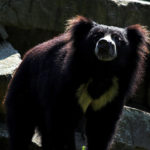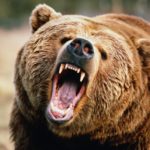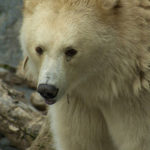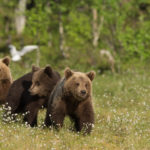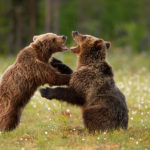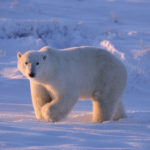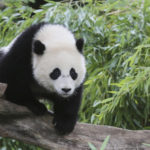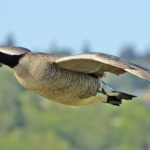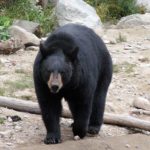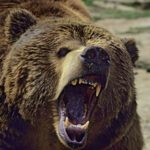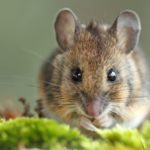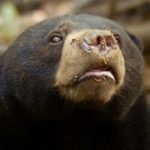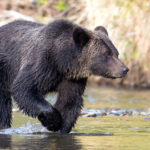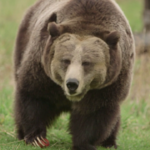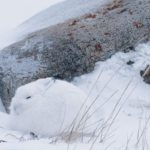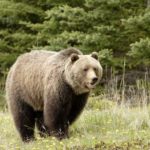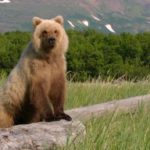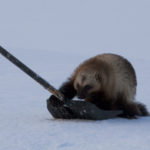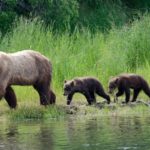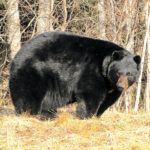Bears
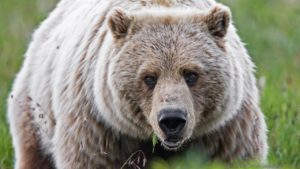 To begin with, the bear is the largest of the modern predatory animals. Some of them reach a length of 3 meters and weight up to 700, and white sometimes up to 1000 kilograms. A powerful body, strong five-fingered paws with large claws, a short tail, a massive head with small eyes and ears – who does not know brown?
To begin with, the bear is the largest of the modern predatory animals. Some of them reach a length of 3 meters and weight up to 700, and white sometimes up to 1000 kilograms. A powerful body, strong five-fingered paws with large claws, a short tail, a massive head with small eyes and ears – who does not know brown?
Brown bears have chosen the taiga, mountain forests, and fertile meadows along the rivers for their living. Their range stretches from the Arctic coast, through the tundra and northern forests, to Spain, Italy and Iran in Eurasia, and on the North American continent to Mexico itself. The population of brown bears is also in Japan, on the island of Hokkaido.
It is believed that 125-150 thousand brown bears live around the world. But they remained mostly only in the distance from industrial centers. And where the civilization has clamped the bearish nation from all sides, the beast is sharply tiny.
It is said that in the middle part of Russia it is still possible to meet a bear, and here and there it is also hunted for bargaining. But the carcass of this rare prey will not weigh up to 75-150 kg, and the skins spread on the floor of the cabinet barely cover the square meter of the floor – now they only mention the three-meter-high giant in hunting bikes.
The color of the skin of Mikhail Potapich is quite varied. Its wool can be painted in a variety of shades of brown – from rusty to dark brown, almost black. Moreover, to old age – 20-25 years – the ends of hair turn gray, and the bear becomes gray.
In pursuit of prey, the bear develops speeds of up to 60 kilometers per hour. Strong paws allow. But more often he uses his claws: they are really very long – up to 10-12 centimeters. With their help, he climbs trees, they also get food. Because although the bear belongs to the order of predators, in terms of nutrition, he is more vegetarian.
Bears eat various plants, their roots, stems and fruits – berries, nuts, acorns; Catch insects and rodents, sometimes “indulge” in small ungulates; Bears of the coastal regions are fine fishermen. To provide energy for such a massive body, and even accumulate fat for the hibernation season, they have to eat 30-40 kilograms a day in the summer and autumn.
But he will eat something, but who will give it to him? Bears are often overpowered by lack of fodder. As it was at the beginning of last winter in Siberia. Either the harvest of nuts and berries that fall was especially scarce, or the people tortured by non-payment of wages made the beast a serious competition for collecting taiga gifts, but a significant part of the bear population due to fodder for winter rest did not enter the den, and almost every week local television Gave summaries of the battles of our gallant militia with otoschavshimi bears, who in search of food wandered to the outskirts of human settlements.
If the bear managed to accumulate fat reserves, with the onset of cold weather and the reduction of sources of nutrition in his body, all metabolic processes slow down. The beast is preparing for the so-called winter hibernation. He becomes sluggish and apathetic and, according to instinct, begins to seek and equip himself with a lair. Where soon and falls asleep. However, his winter sleep is not very deep and does not resemble the hibernation of other animals. Unlike rodents, the temperature of the bear’s body drops slightly, only 3-5 degrees. The bear, lying in the den, does not urinate and does not defecate. In any other animal, in this case, a fatal poisoning of urine would occur in a week, and the bears begin a unique process of recycling waste waste into useful proteins.
